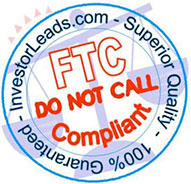Can I use Financial Investment Leads for
This article covers when telemarketing to cell phones.
Background
The 1991 Telephone Consumer Protection Act (TCPA) (47 U.S.C. 227 , 47 CFR 64.1200) prohibited the use of an “automatic telephone dialing system” to contact “any telephone number assigned to a …cellular telephone service” without “express prior consent” from the party being called. Dialing “accidents” are not an effective legal defense and penalties run from $500 to $1,500 per violating call.
Automatic telephone dialing systems (known as “autodialers”) are an essential tool of survey, opinion and marketing research, reducing cost (the time it takes to dial a number manually) and the chance of error.
The FCC’s new 2015 TCPA regulations broadened the definition of an autodialer to include almost any dialing equipment short of a rotary-dial phone. The rules also set a one-call-before-liability standard for autodialer calls to cell phone numbers that have been reassigned to new users — whether or not the caller ever learns of that reassignment — even though 100,000 cell phone numbers are reassigned every day and no database captures more than 80% of them.
More Than Three-Fifths of America Only Reachable on Cell Phones
More than two-fifths of American homes (47.4%) had cell phones and no landline phones in the 1st half of 2015 – a 3.4% increase from a year prior, and more than double since 2008. About 46.7% of all adults (113 million) lived in wireless only homes — and the same for 55.3% of all children (41 million children). Also, a sixth of American homes (14.6%, 39 million adults) still had a landline, but received all or almost all calls on their cell phones.1
These 62% of American households aren’t the same as the rest. For instance, the cell phone only population is more likely to be younger, include more renters and minorities (59.2% of Hispanic adults), engage in more risky behaviors (binge drinking & smoking), lack health insurance, and earn less as compared to the wider U.S. landline population.
MRA’s position: The TCPA restrictions constitute an archaic tariff from which bona fide survey, opinion and marketing research calls should be excluded.
- Representative samples: Researchers need to be able to include cell phone users in their studies to have viable coverage in their samples – and 62% of households can only be reached that way. It is unlikely that these populations would wish to be disenfranchised from research studies (which serve as an ombudsman for the American public).
- Cost multiplier: Researchers seeking to include cell phone users in their studies estimate that doing so takes longer and costs 2 to 4 times as much as an ordinary telephone study.2
- Research was not the intended target of the TCPA: Most TCPA provisions only target telemarketing and Congress and the FCC always discussed it in that context. Original sponsor Senator Hollings said it was about “telemarketing calls placed to the home”3 and Senator Pressler said the TCPA was “for cost-effective protection of consumers” against “this invasion of their privacy by unrestricted telemarketing”.4
- Serve consumers instead of lawyers: Amidst rampant TCPA class action lawsuits, the average consumer recovery in a settlement is $4.12, while lawyers average $2.4 million.5
- Nabbing the real criminals: The FCC should focus on deterring/punishing illegal and abusive telemarketers, as Congress originally intended, instead of harming legitimate research businesses.



